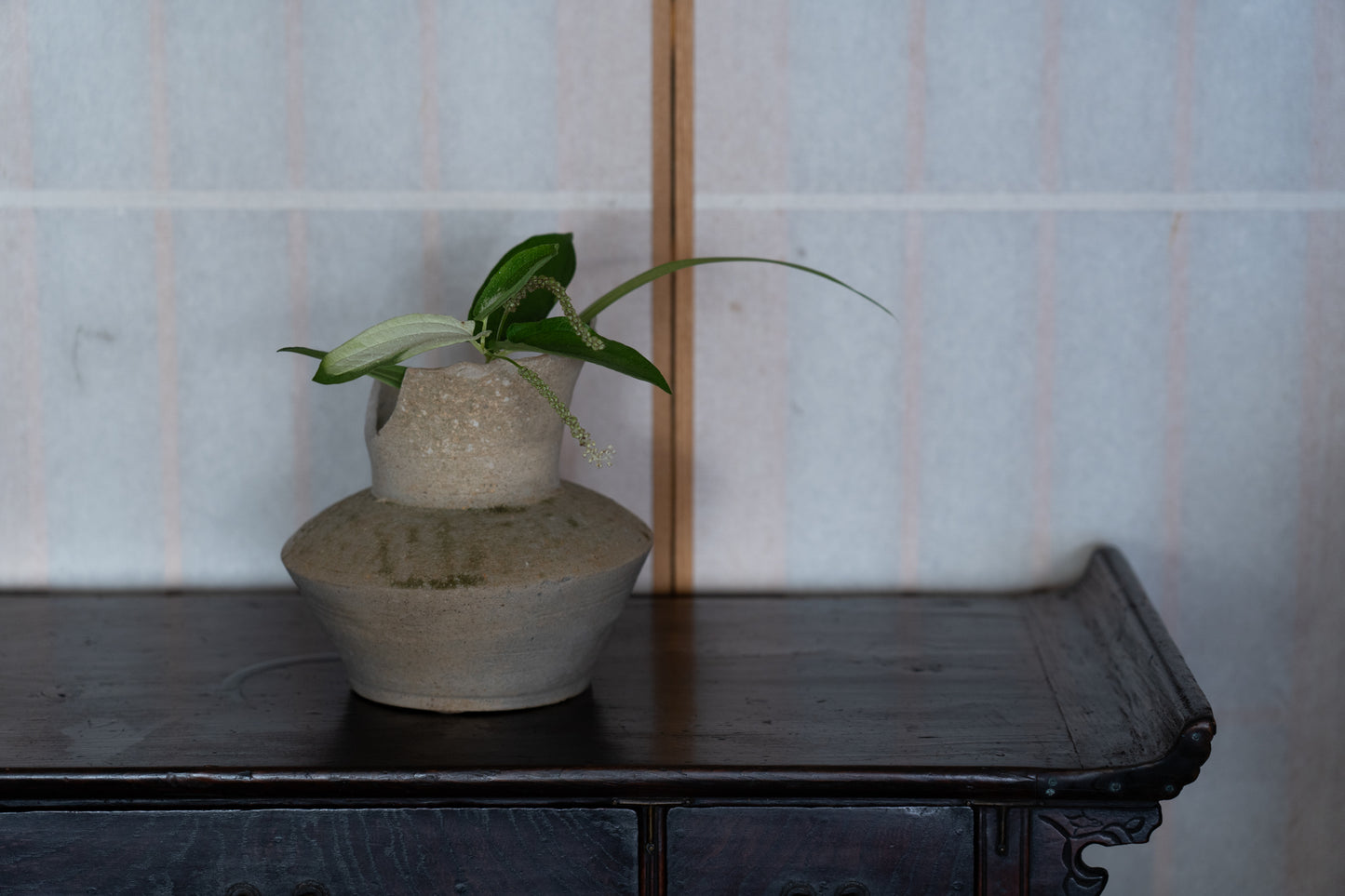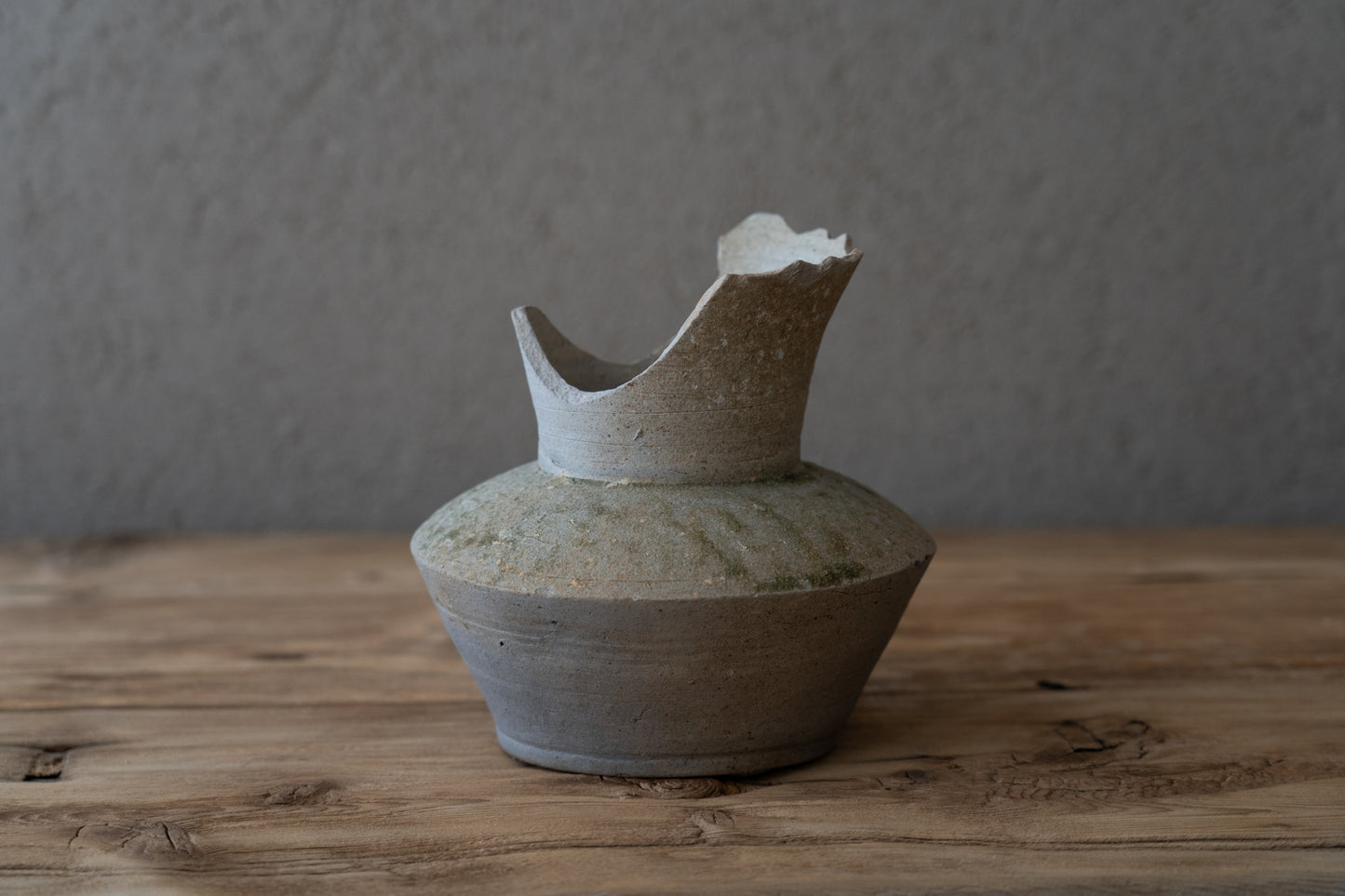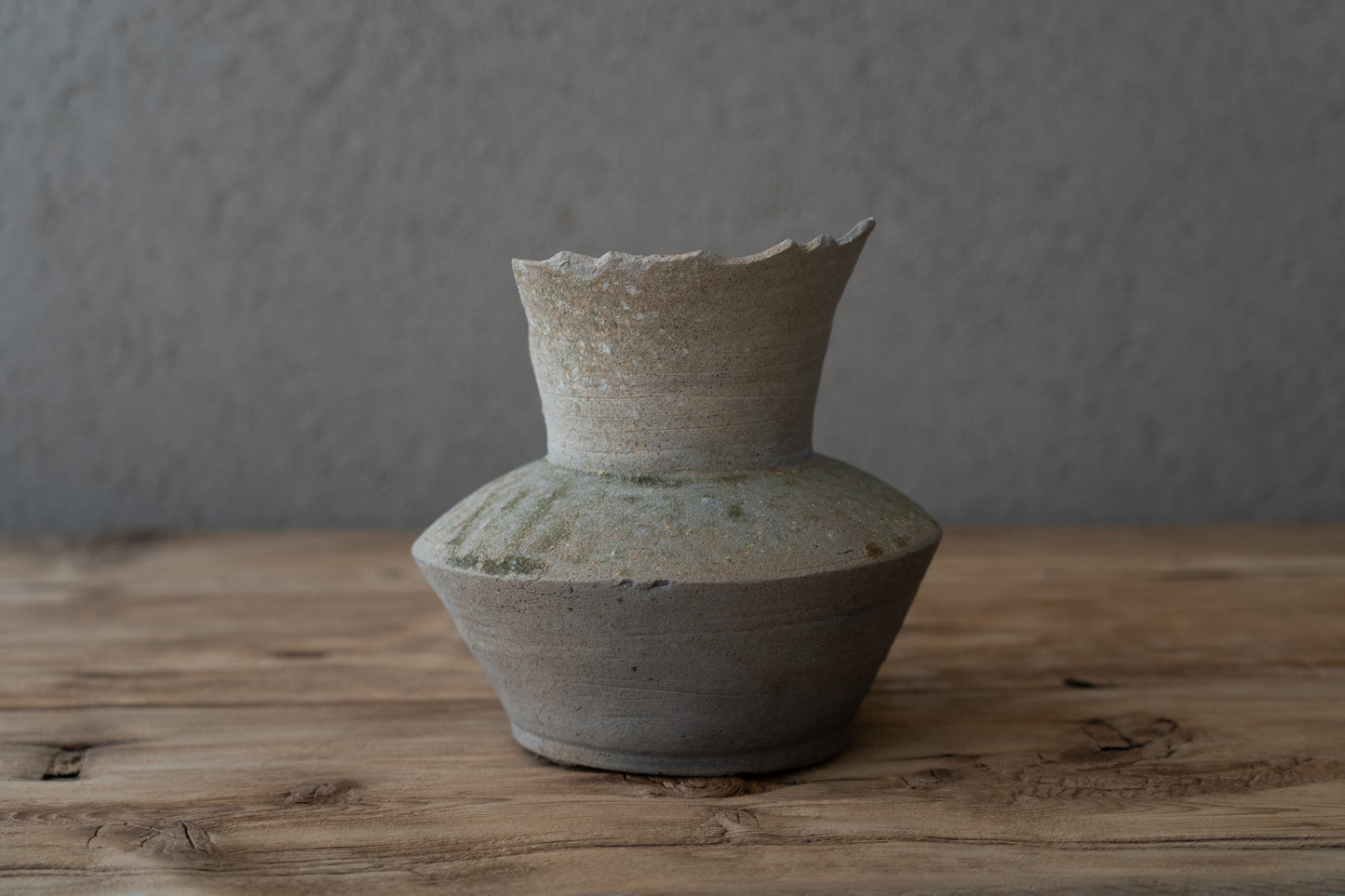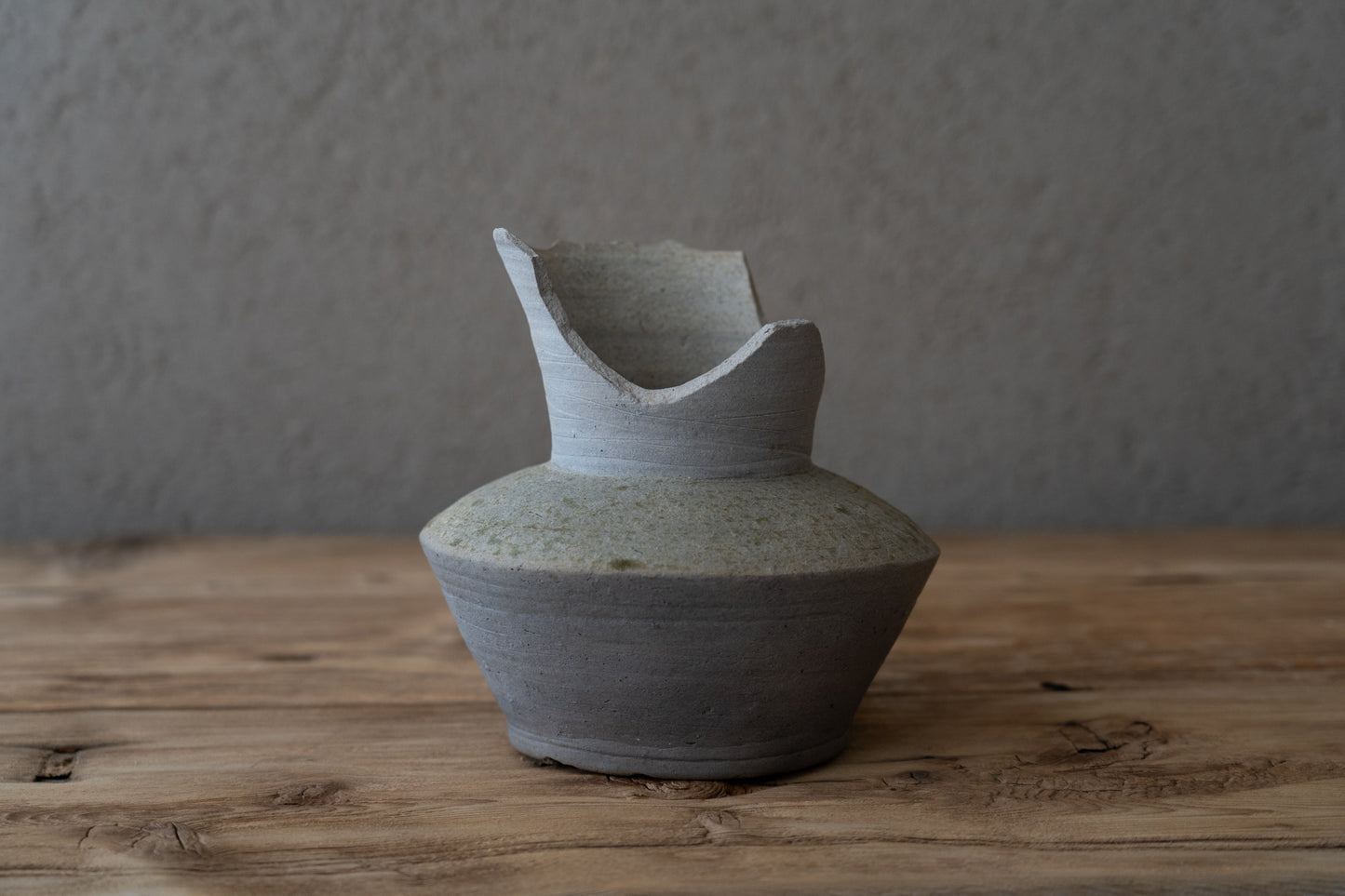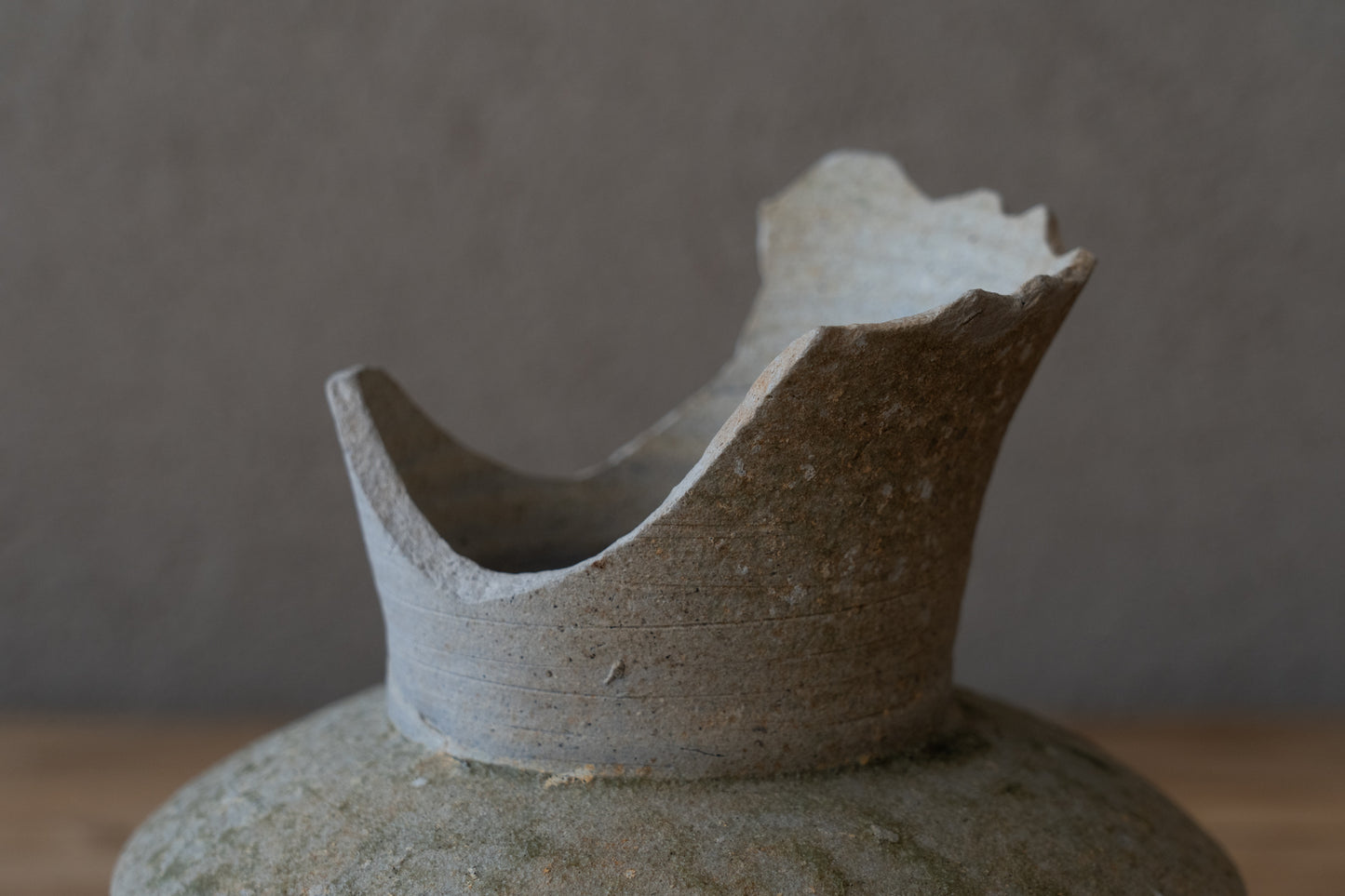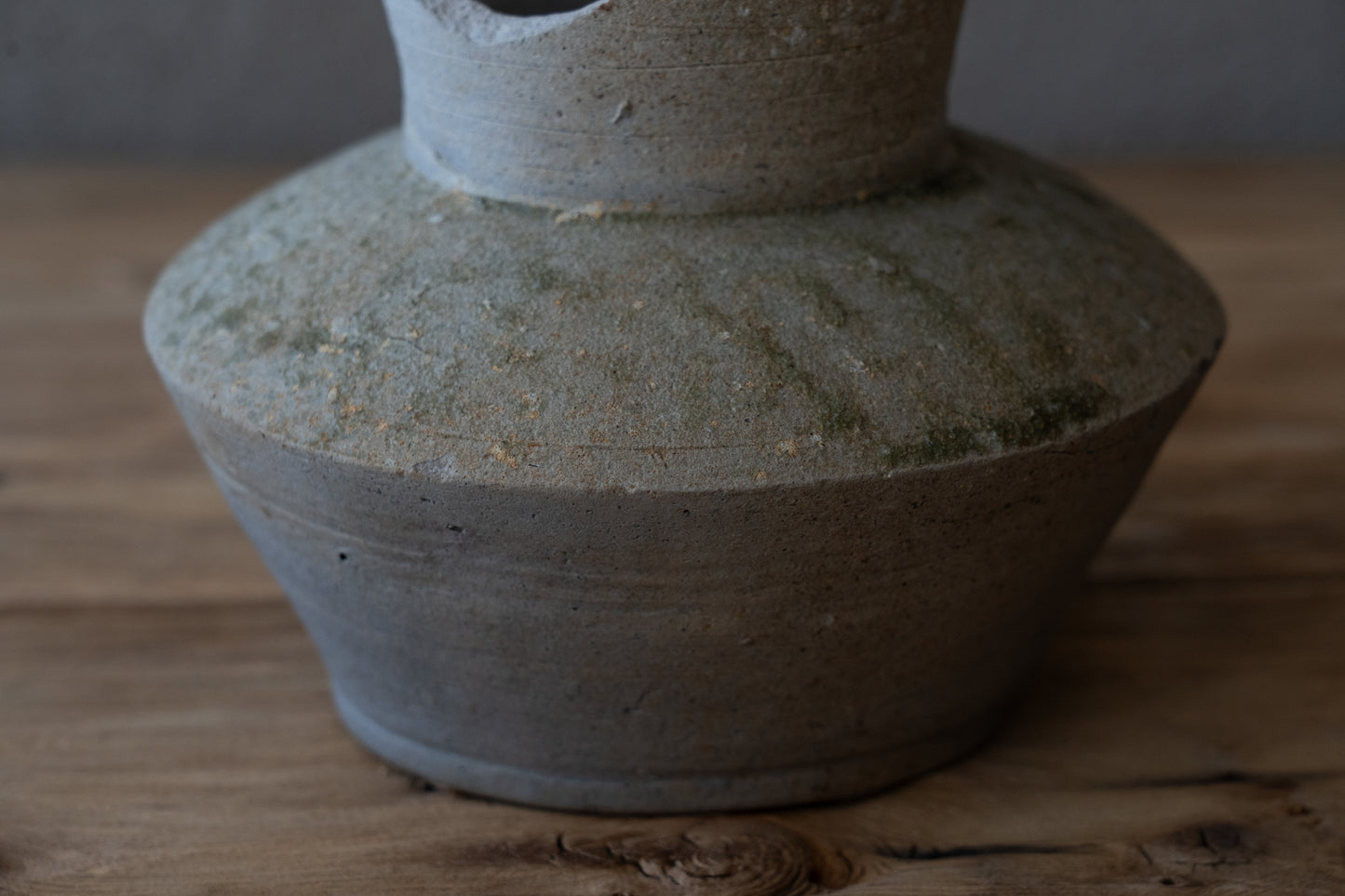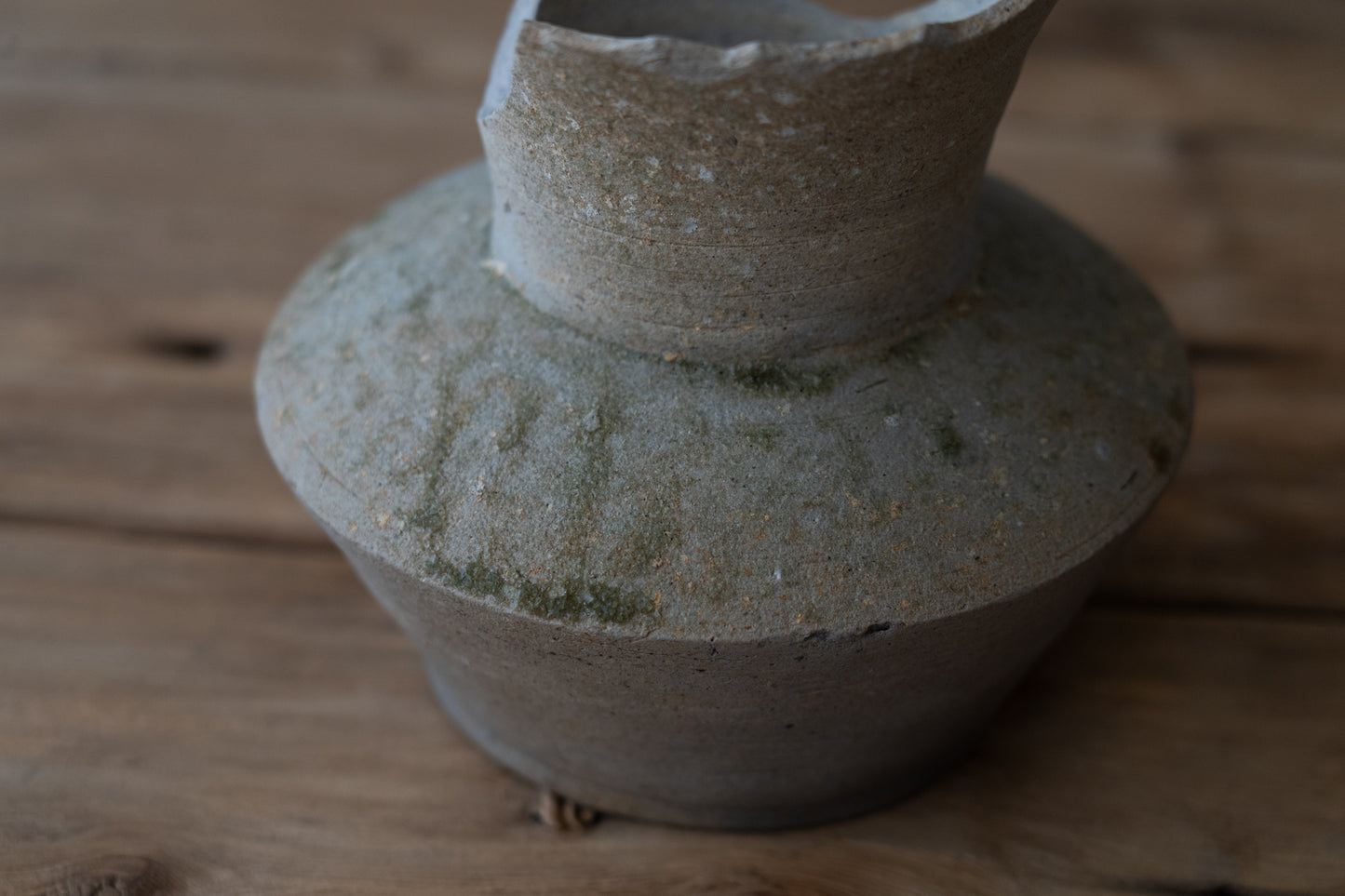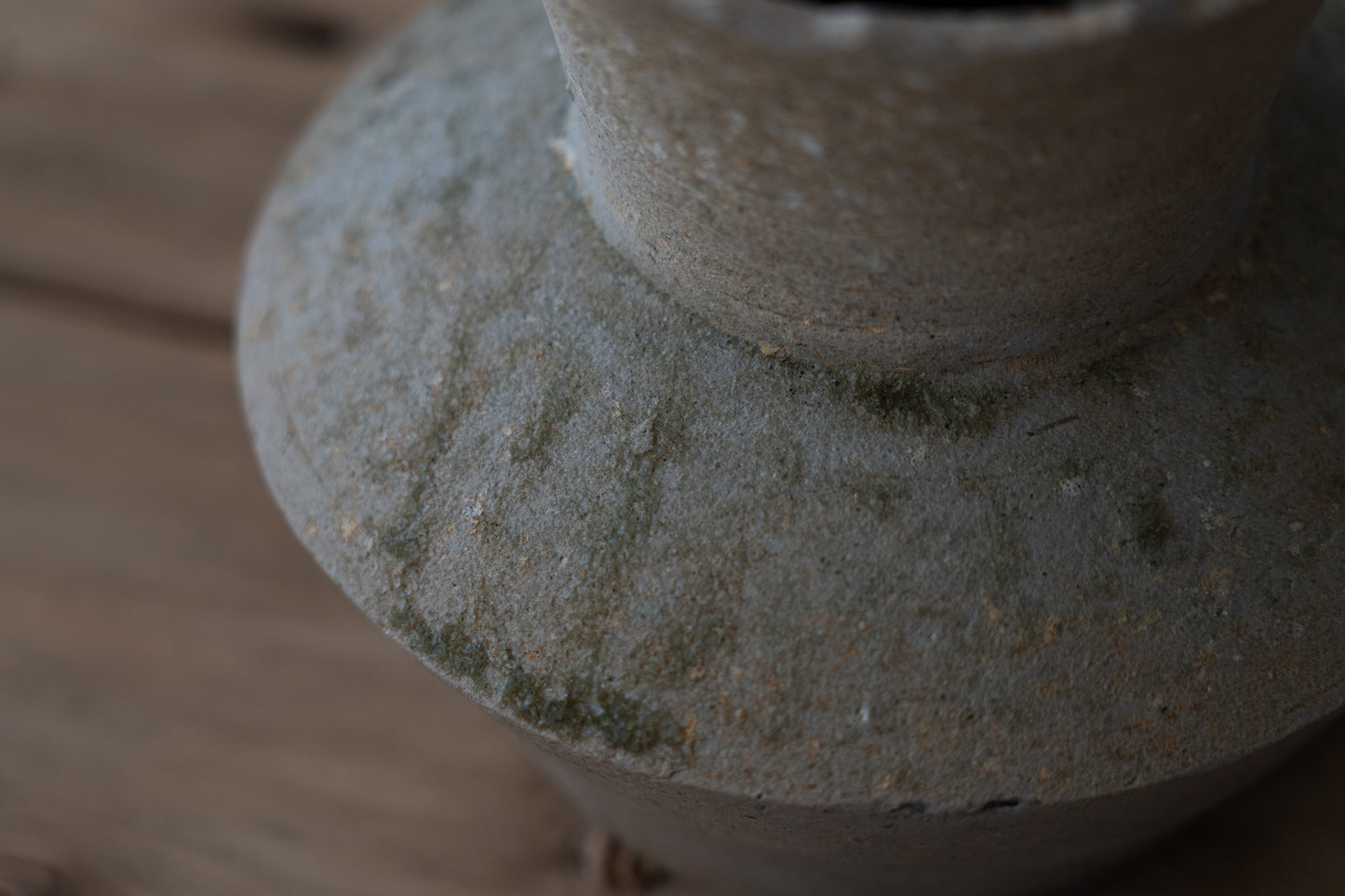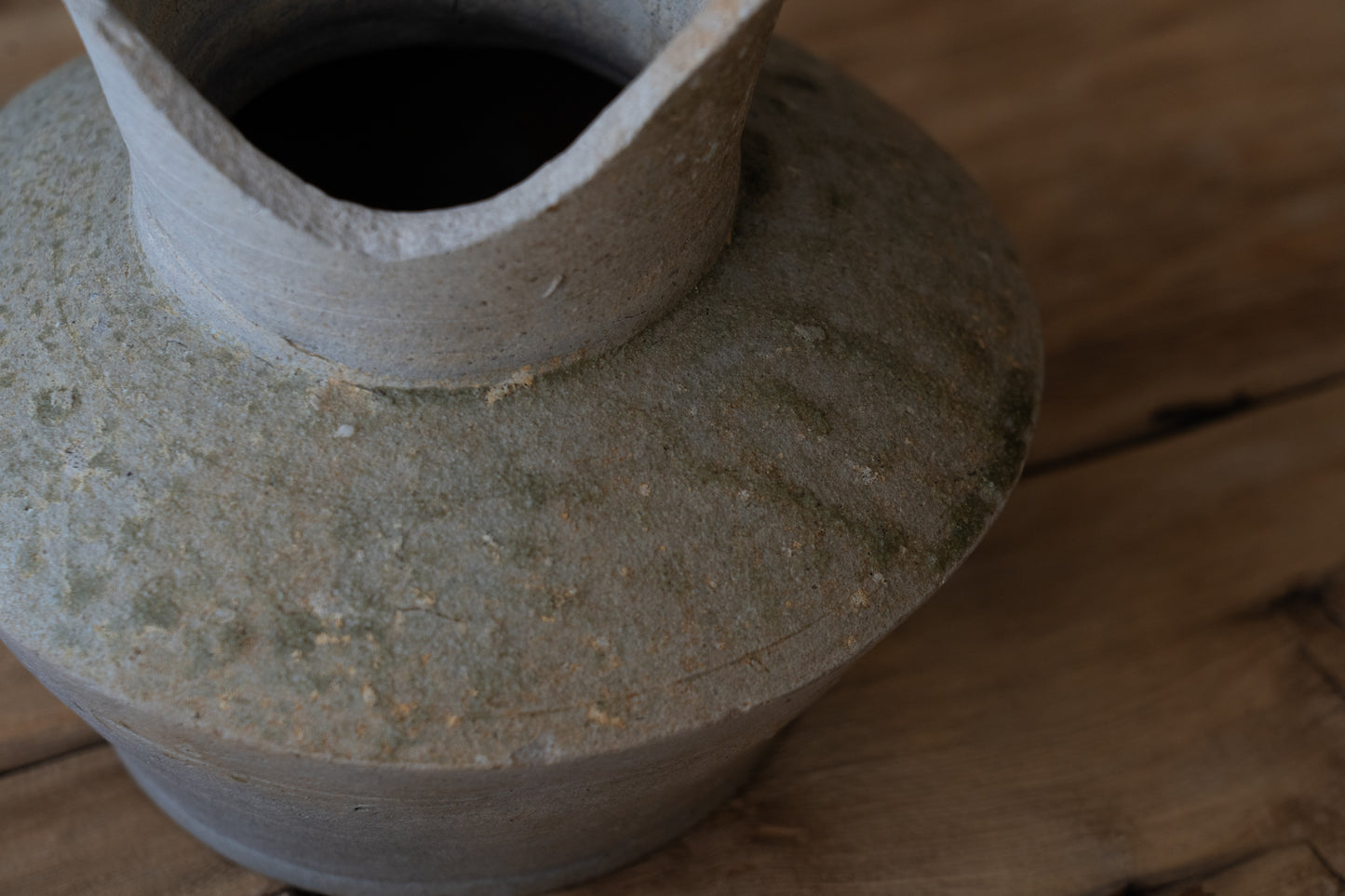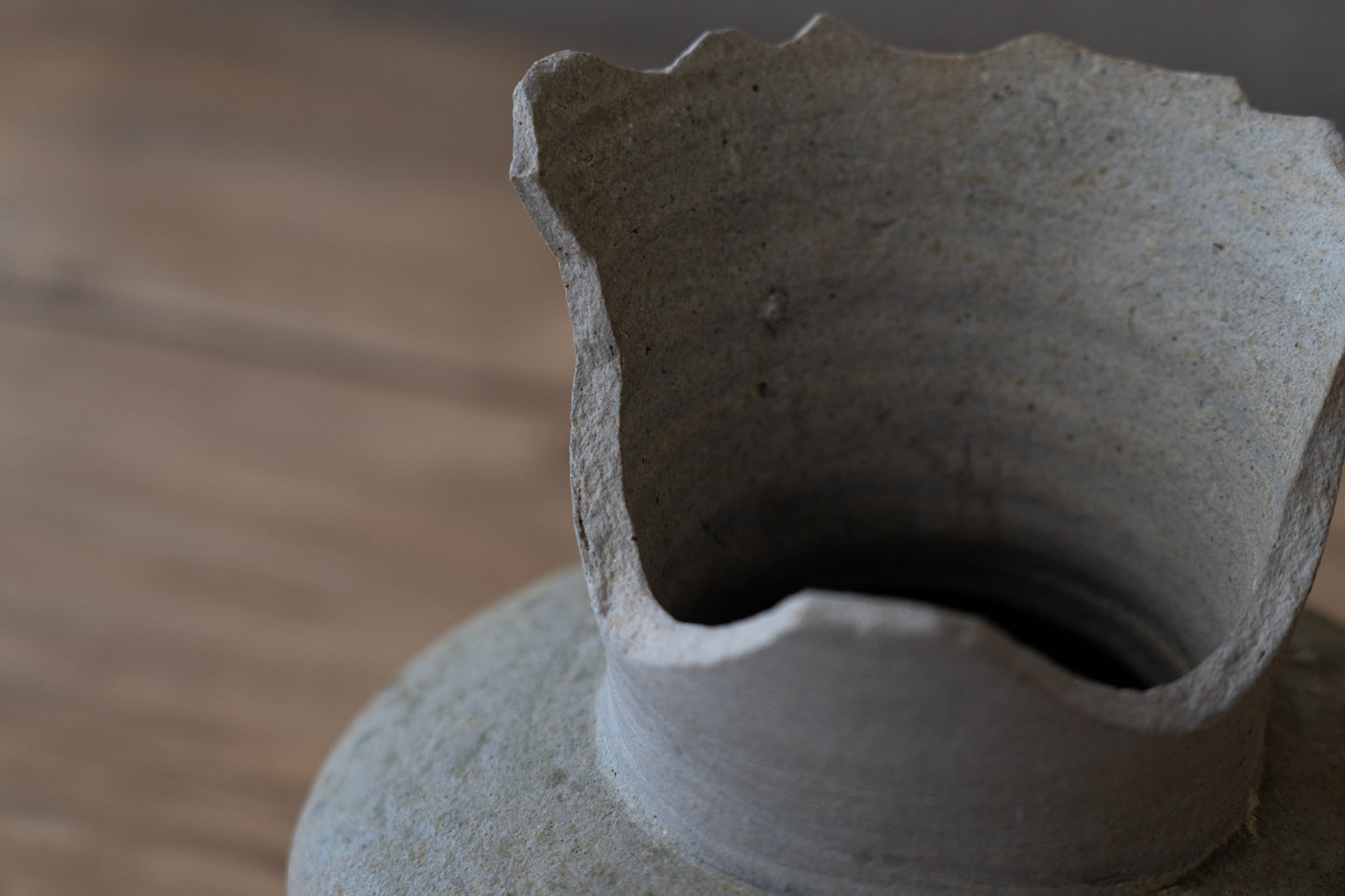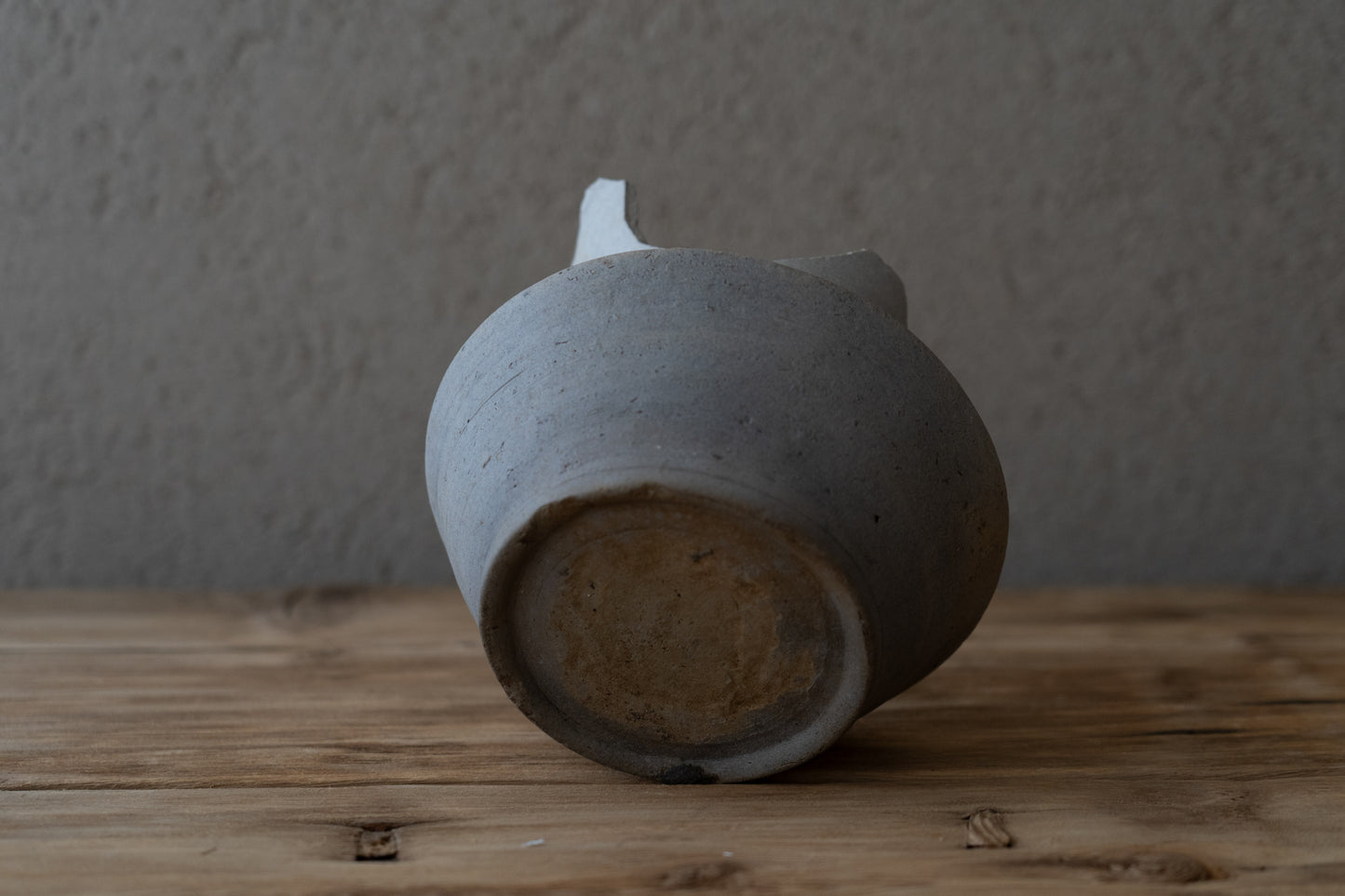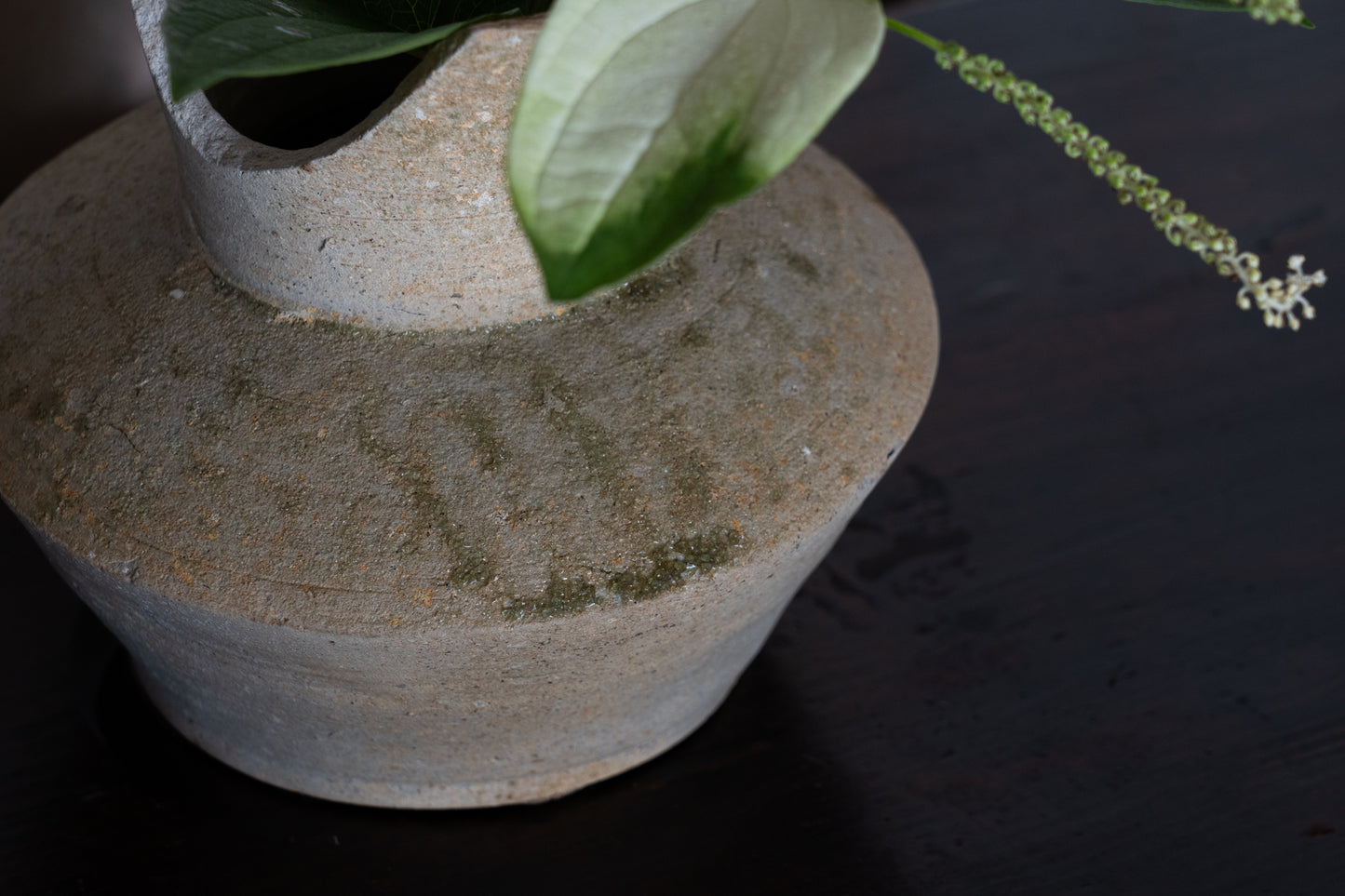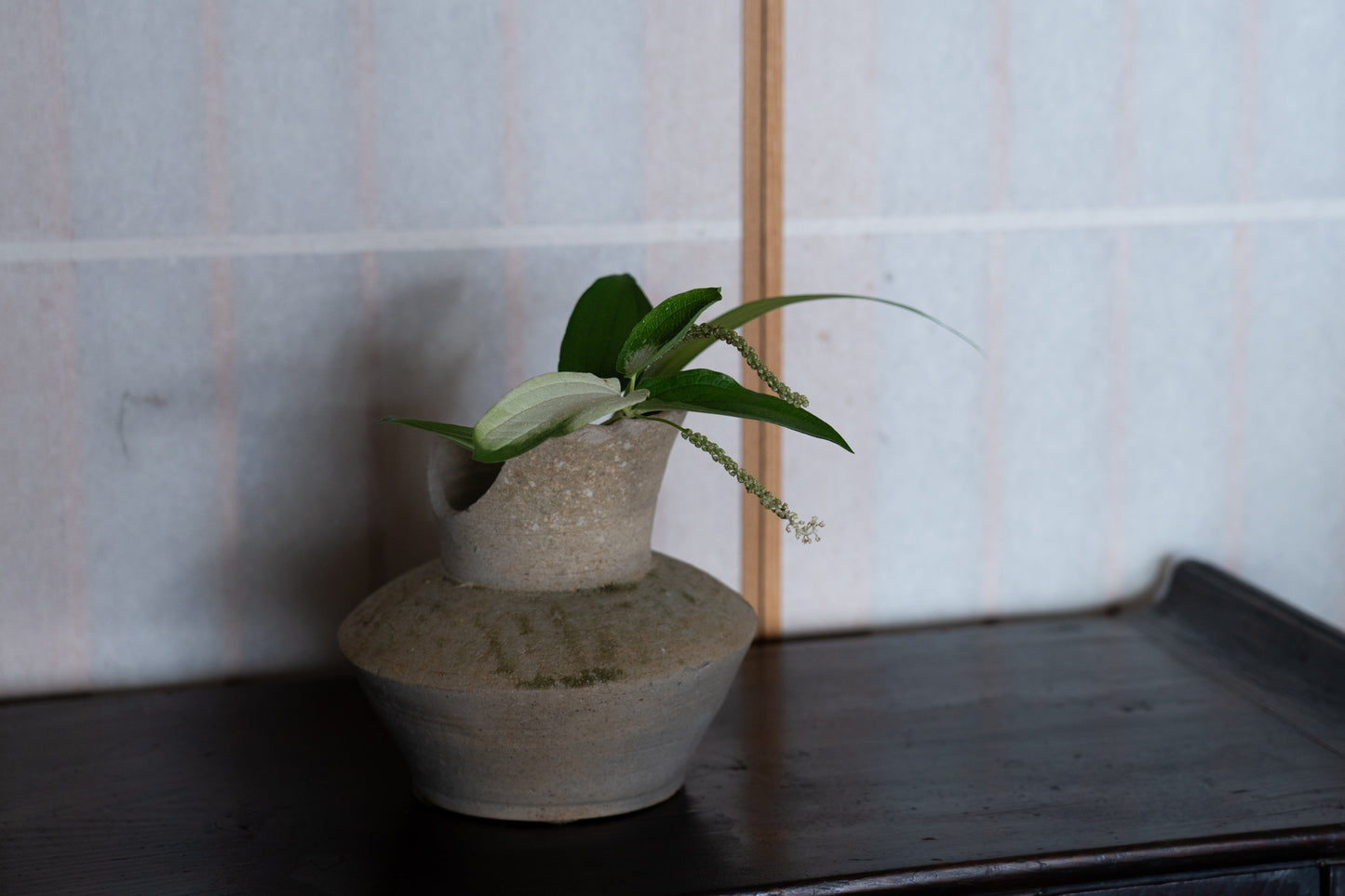Sanage ash-glazed vase
¥145,455
- Region/Era Mid-Heian period (the 10th century)
- Size H18.4×W19.5×D19.5cm
- Condition Large chip in mouth (as shown in photo)
- Accessory paulownia box
- No. 43nk-72
Sanage Kilns were one of the leading ceramic production sites in ancient Japan, scattered across the hills east of Nagoya City.
Ceramics made from the clay unique to this area, which is fine-grained and fired to a grayish-white color, have many fans in the antique world.

This piece is an ash-glazed jar from Sanage Kiln. Perhaps it is the line of the shoulder that gives it a sense of dignified tension. Although it has a slight bulge, the base connects to the shoulder and the shoulder to the neck at a sharp angle. The wide rim spreads out like a trumpet, making it a shape also known as a wide-mouthed jar.
Sanage kilns from the Asuka to Heian periods aimed to create shapes similar to those of metalware and to imitate continental (Chinese) pottery. The thin walls, smooth texture, and sharp shape of the edges and shoulders clearly convey the consciousness of the ancient people.

The overall surface is grayish white with pale green ash glaze flowing in places. The glaze has accumulated on the flat shoulder area and hardened into a glass-like substance, giving the piece a fresh impression.

As you can see in the picture, there is a large chip on the rim. This is also a good balance. Strangely enough, in the case of Sanage, this chip is also accepted as a beautiful feature that enhances the shape of the piece.
It could be said that the deciding factor in making a choice is not whether the item is perfect, but whether you like the way it is chipped.
If you think about using it as a flower vase, it can hold broken flowers, and there is an interesting quality to it that you can't get with a perfect vase. How do you decide how it looks depending on the angle, and how do you show the flowers at the base peeking through the cracks? It gives you all kinds of ideas.
There is no problem with pouring water directly into the container. It may feel a little humid over time, but there is no risk of leakage.

I have handled Sanage many times, and each time I am fascinated by its mysterious quality. It has a lack of vulgarity that is not found in later pottery such as Oribe, Shino, and Seto, or in Japanese pottery from other regions.
Even in its dilapidated state, it still exudes an air of purity, perhaps due to it having been a practical item used only in religious ceremonies and for the nobility.
To pick up and see the actual item in the gallery.
Reservation